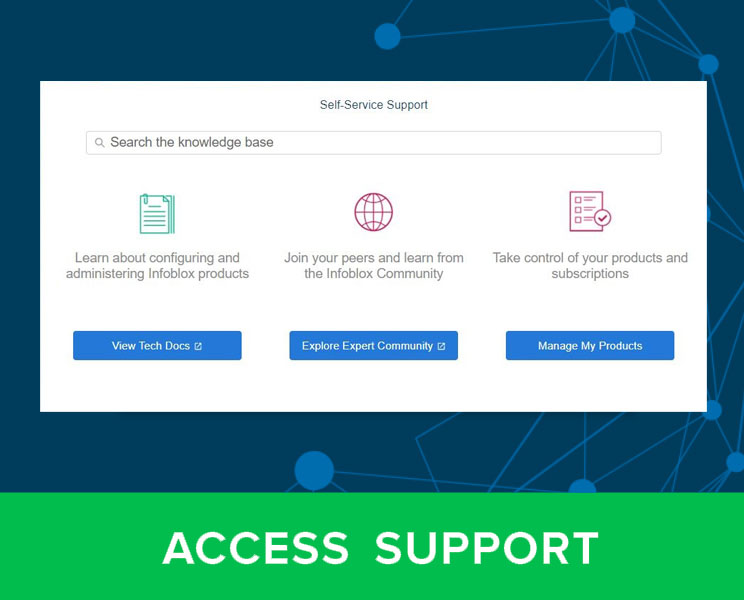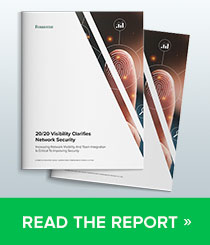You may have heard that the Internet is running out of IPv4 addresses. With the explosion of IP-enabled mobile devices and a growing global Internet community there is an ever-increasing need for public addresses. The Regional Internet Registries (RIRs) are reducing their supply of addresses and service providers are feeling the crunch. The RIRs each have different stages and phases of their rundown and some RIRs are trying to perform a graceful run out of IPv4 addresses.
IANA
The Internet Assigned Numbers Authority (IANA) is the organization that oversees the world’s supply of IP addresses, BGP Autonomous System (AS) Numbers, DNS and other Internet Protocol numbering. IANA manages the IP addresses by allocating address blocks to the five Regional Internet Registries (RIRs) that operate in the different geographic regions of the world. IANA fully allocated all the IPv4 addresses to the regional registries on February 3, 2011. Now each of the five RIRs must manage that finite resource. Each of the five RIRs each have different plans for how they will manage their remaining addresses.
Soft Landing
Different RIRs have what is known as “soft landing” policies intended to slowly exhaust the IPv4 pools without rapidly running out and causing panic or extreme market conditions. These policies are meant to slow the allocation of addresses to help organizations ease into the realization that IPv4 addresses are limited. The soft landing policies make it nearly impossible to completely extinguish an RIR’s supply of addresses. There will always be some available for some emergency situation. The RIRs have all the IPv4 addresses that they will ever have and this supply needs to last then indefinitely (or until everyone on the planet stops using IPv4).
APNIC
Asia Pacific Network Information Centre (APNIC) was the first RIR to enter the final stages of IPv4 address exhaustion. APNIC has experienced tremendous Internet growth in the past decade and they had a policy that allowed them to quickly allocate all but one /8 block worth of addresses. Here is a presentation by Guangliang Pan on the “Final Stages of IPv4 Distribution“.
APNIC entered their Stage 1 when IANA still had available addresses in their unallocated pool to give to the RIRs. Stage 2 started on February 3, 2011 when IANA allocated APNIC their final /8s. APNIC moved quickly through Stage 2 and Stage 3 started a few months later on April 15, 2011 when they reached their final /8.
In this Stage 3, APNIC will allow a maximum allocation of a single /22 (or 1024 addresses) per organization (from 103.0.0.0/8). Therefore, IPv4 addresses are all but exhausted in Asia. Local Internet Registries (LIRs), Service providers and other organizations in the region are no longer able to get any more IPv4 addresses. They have to make do with what they have or go through the process of transferring addresses from other organizations.
RIPE NCC
The Réseaux IP Européens Network Coordination Centre (RIPE NCC) is the RIR that operates in Europe, the Middle East and parts of Central Asia. RIPE NCC has been managing its IPv4 address space and working toward a soft landing but, like every other region worldwide, they have experienced a large growth of Internet connected devices. RIPE NCC has had three phases along the way to reaching their final /8 of IPv4 addresses. Here is a 2-page leaflet about their phases of address exhaustion.
Phase 0 occurred before RIPE NCC started to experience low levels of IPv4 address space. Phase 1 was reached on February 3, 2011 (effectively March 2011) when they received a final /8 from IANA. Phase 2 was reached on September 14, 2012 when their pool of available IPv4 addresses dropped to their last /8 block worth of addresses.
RIPE NCC has a page that shows a graph of their available IPv4 pools and you can see that their addresses have been stable since they reached their final /8 because of the new allocation strategy. RIPE NCC has a FAQ: “IPv4 and Reaching the last /8” to help educate their members on the procedures during this final phase of address exhaustion. RIPE NCC also has a document on the “IPv4 Evaluation Procedures” for new requests for addresses. You can see that it will be extremely difficult for any organization operating in this region to be allocated any new IPv4 addresses from this point forward.
ARIN
The American Registry for Internet Numbers (ARIN) is not unique. Just like APNIC and RIPE, it has had a large supply of IPv4 addresses in the past but its supply of addresses has been drawn down as a result of the Internet boom and the growth of mobile Internet-connected devices. ARIN has a four-phase strategy for managing their remaining IPv4 addresses.
Phase 1 started February 3, 2011 when ARIN received a final /8 allocation from IANA. Phase 2 started September 18, 2012 when ARIN reached their final 3 /8 blocks. Phase 2 is the current phase and at the time this was written, ARIN has approximately 2.2 /8 blocks worth of addresses available. ARIN is now allocating addresses based on the order in which they are received. In order to receive any IPv4 addresses an organization must show detailed usage information for their current IPv4 blocks. Service providers must show 80% utilization of their last allocation and high utilization of addresses allocated to customers. Enterprises must show 80% utilization of their previous assignments in order to be able to request additional addresses. ARIN has a one page document on what happens in Phase 2.
Phase 3 will begin when ARIN has two /8s remaining. Based on the current rate of allocation, it may be only a few months before ARIN enters Phase 3. Phase 4 will begin once ARIN reaches its final /8 and this is expected to happen in less than a year (as mentioned above, RIPE and APNIC have already reached this phase).
LACNIC
The Latin America and Caribbean Network Information Centre (LACNIC) is the regional registry that operates in the South America, Central America and Caribbean regions. LACNIC has been slowly exhausting the IPv4 addresses of their final /8 allocation from IANA. Like everywhere else, these regions have seen rapid growth in new Internet users and their growing economies have accelerated the allocation of IPv4 addresses. Here is a graph of their recent allocations and their remaining IPv4 address space. The current LACNIC Policy Manual has a section on IPv4 Address Exhaustion.
LACNIC has not entered any exhaustion phase because they currently have sufficient IPv4 addresses available to allocate, but one can be sure that they are diligently monitoring their supply and planning a soft landing method. LACNIC is predicted to exhaust their IPv4 address supply by the end of next year.
AFRINIC
AFRINIC is the RIR that manages IP address allocations in Africa. AFRINIC has a considerable supply of IPv4 addresses based on their current rate of allocation. However, there is a rapidly growing Internet community in African countries that could cause them to extinguish their supply of addresses faster than currently anticipated.
In spite of their currently sufficient supply, AFRINIC has a soft landing policy to help them conservatively manage their remaining IPv4 addresses. This policy includes a 2-phase exhaustion strategy. Exhaustion Phase 1 is the current phase where IANA has allocated a final /8 to AFRINIC. This phase will continue while AFRINIC still has IPv4 addresses available to allocate to its member LIR/ISPs and their end users. AFRINIC will likely be in this stage for the next five years. Exhaustion Phase 2 starts when AFRINIC reaches their final /8. During this phase organizations may be allocated a minimum of a /24 up to a maximum of a /22.
Summary
Different RIRs have different stages or phases of IPv4 address depletion. Each RIR is on a different schedule, but they are all running out of addresses and trying to allocate the final addresses using a fair and equitable method. The following table shows the RIRs and their phases or stages of IPv4 exhaustion.
| Stages/Phases | APNIC | RIPE NCC | ARIN | LACNIC | AfriNIC |
| IANA Free Pool | Stage 1 | Phase 0 | |||
| Final /8 from IANA | Stage 2
February 3, 2011 |
Phase 1 | Phase 1
February 3, 2011 |
Phase 1 February 3, 2011 | |
| Final 3 /8s | Phase 2
September 18, 2012 |
||||
| Final 2 /8s | Phase 3 | ||||
| Final 1 /8s | Stage 3
April 15, 2011 |
Phase 2
September 14, 2012 |
Phase 4 | Phase 2 |
Geoff Huston, Adjunct Research Fellow at the Centre for Advanced Internet Architectures, and Chief Scientist at APNIC, has a web site where he is tracking daily the exhaustion of the various RIRs (IPv4 Address Report).
Each of the RIRs has been trying to raise awareness among its members of impending IPv4 address exhaustion. However, many organizations have yet to listen to the RIR’s advice to start their IPv6 adoption. Few organizations have enough IPv4 addresses to sustain their business indefinitely. Ask yourself, does my organization have enough IPv4 addresses to last us the next 20 years?
Some organizations I talk to seem to think that there are plenty of IPv4 addresses for the future because the RIRs haven’t completely exhausted all of their addresses. I tell them that they should submit a new request for IPv4 addresses and that they might subsequently discover that it’s more difficult to get addresses than they previously thought. In other words, if you think there are plenty of IPv4 addresses remaining, try to get a /18 allocation. It won’t happen!
If your organization hasn’t yet started planning for IPv6 adoption, the exhaustion stages of the RIRs should help you realize that you shouldn’t postpone your IPv6 deployment any longer.
Scott





